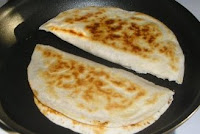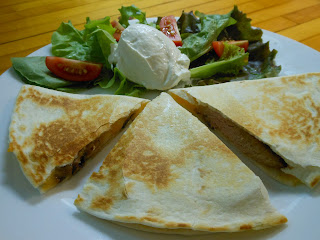Our friends often ask us if we cook meals from scratch every night. When we answer in the affirmative, several other questions usually follow such as “how do you find the time?” or “isn’t cooking equipment expensive?” Cooking and dining at home has many advantages, here are the biggies:
Time:
Even if you have not planned ahead and must make a quick stop at the grocery store (which you probably need to do anyway to pick up cereal and milk,) eating in takes no more time than eating out. When you consider the amount of time it takes to drive to the restaurant, find a parking place, wait for your table to be ready, wait for your food to be prepared, wait for the bill and drive back home, it may even be far quicker to stay home (and safer since there would be no risk of driving under the influence on the way home.) By thawing frozen foods in advance, chopping or slicing ingredients ahead or even cooking your entire meal in a slow cooker, you can save even more time.
Quality:The main reason we choose to cook our own dinners is that we have complete control over the ingredients that we cook with. Restaurants can claim to use fresh organic produce and wild-caught fish, free-range chicken or grass-fed beef, but you seldom see the items before they arrive on your plate. There is no way to know if the shrimp gumbo you order today is yesterday’s leftover shrimp cocktail. People with food sensitivities and allergies must be vigilant when reading menus to ensure that all ingredients are safe for them to eat. My allergy to pine nuts is a prime example. A menu may not tell you that the hummus or pesto is made with pine nuts, and if you forget to ask, the evening could end in a trip to the ER. Also, in order to comply with certain health codes, restaurants are required to cook meats and seafood to higher temperatures that may result in them be better done then you prefer. Lastly, restaurants are notorious for their liberal use of salt and butter. When you cook your own meals you control the amount of spice, salt and fats.
Cost:There is no question that is less expensive to cook your own meals than to eat out. The menu price of an entrée far exceeds the cost of the ingredients used to make it, and it is widely known that restaurants charge double, triple or even quadruple the retail price of a bottle of wine. Instead you are paying for the building rental, utilities, chef’s experience, wait and kitchen staff wages, even the napkins and dishes. In addition, you have the privilege of paying sales tax and the expected 15% gratuity, not to mention the gas to get there and parking or valet fees.
While an initial investment in quality equipment is a good idea, there is nothing that says you must have a Wustof knife or All-Clad cookware to prepare a great meal. Experiment with different shapes and sizes and upgrade over time (with the money you saved by eating at home). Another added benefit of cooking at home is that you can frequently get more than one meal out of a dish: one large batch of tomato sauce can be served with meatballs over pasta one night and used to top homemade pizza another night; pot roast leftovers make hearty “debris” po’boys; and, extra rice becomes rice pudding for dessert.

One of the best examples of an overpriced menu item is the quesadilla. Have you ever wondered why every bar features one on their menus? Because they are incredibly profitable! A simple chicken and cheese quesadilla at Chili’s Restaurant costs upwards of $9.59, when a few low-cost ingredients and a hot pan are all you need to make this fast tasty dish for less than $1.50 per serving:
- 4 medium-size flour tortillas
- 2 cups Monterrey Jack, sharp cheddar or cheddar jack cheese, grated
- 1 cup meat of choice, cooked and chopped (use leftovers for additional savings)
- Sour cream and/or Salsa for garnish
- Cooking Spray

Spray a large skillet with cooking spray and warm on medium heat. Lay one tortilla flat and place ¼ cup of chicken on one half of the tortilla, sprinkle ½ cup cheese over the chicken and fold to close the quesadilla. When pan side is lightly brown and the cheese is melted, flip the quesadilla over and continue heating until browned lightly and crisp on the second side. Remove from pan and serve immediately with sour cream and/or salsa.
Atmosphere:Even the most elite and exclusive restaurants can be quite loud. And, while a dimly lit dining room can be romantic, the lights are regularly lowered to control noise. And, at times it seems that wait staffers are trained to arrive at your table at the most intimate of moments. In your own home, you set the mood. You can select the background music, the lighting, the table setting, the food and wine. You can speak freely without being overheard or interrupted, manage cantankerous kids, and linger over a glass of wine without pressure to vacate your table. You also gain useful life skills by learning and improving your cooking prowess. Even cleaning up can be rewarding by providing an opportunity for camaraderie and teamwork.
 Quick Sweet Pickles
Quick Sweet Pickles










